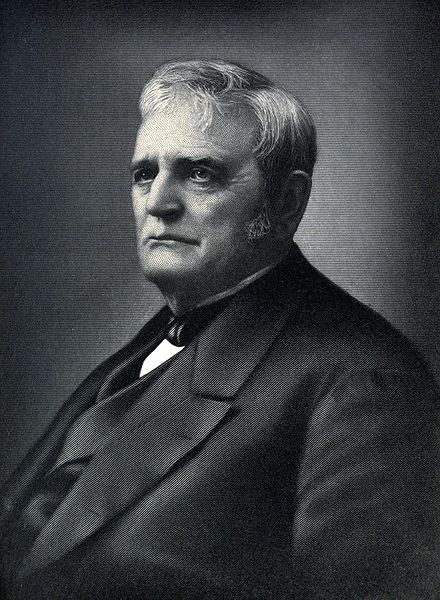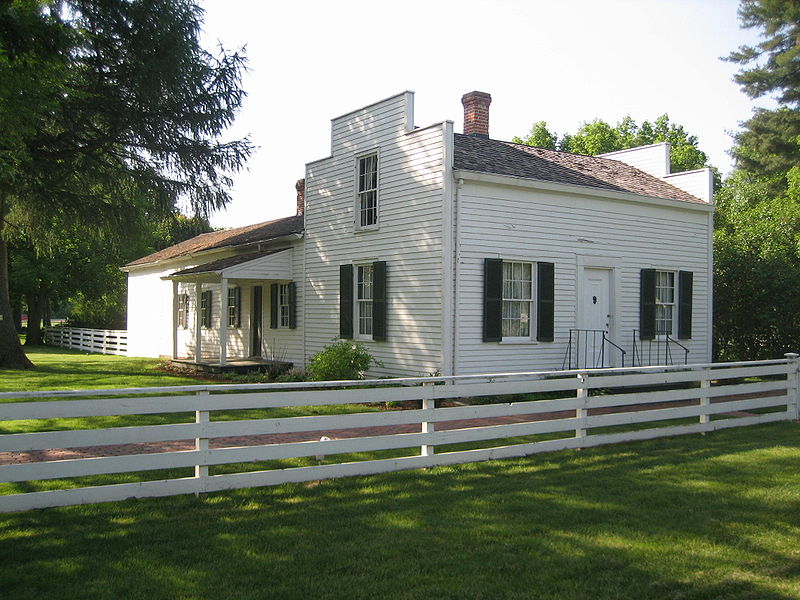<Back to Index>
- Inventor John Deere, 1804
- Writer Laura Elizabeth Ingalls Wilder, 1867
- Emperor of China Aisin Gioro Pŭ Yí, 1906
PAGE SPONSOR



John Deere (February 7, 1804 – May 17, 1886) was an American blacksmith and manufacturer who founded Deere & Company, one of the largest and leading agricultural and construction equipment manufacturers in the world. Born in Rutland, Vermont, Deere moved to Illinois and invented the first commercially successful steel plow in 1837.
After
a meager education, he was apprenticed in 1821 at age 17, to Captain
Benjamin Lawrence, a prosperous Middlebury blacksmith, and entered the
trade for himself in 1825. He married in 1827, and fathered nine children. But as he was having trouble with creditors, Deere's business suffered. Facing bankruptcy, Deere sold the shop to his father-in-law and departed for Illinois.
Deere settled in Grand Detour, Illinois.
As there were no other blacksmiths in the area, he had no difficulty
finding work. Growing up in his father’s Rutland, Vermont, tailor shop,
Deere had polished and sharpened needles by running them through sand.
This polishing helped the needles sew through soft leather. Deere found that cast-iron plows were not working very well in the tough prairie soil of Illinois and remembered the polished needles. Deere
came to the conclusion that a plow made out of highly polished steel
and a correctly shaped moldboard (the self-scouring steel plow) would
be better able to handle the soil conditions of the prairie, especially
its sticky clay. There
are varying versions of the inspiration for Deere's famous steel plow.
In another version he recalled the way the polished steel pitchfork tines moved through hay and soil and thought that same effect could be obtained for a plow.
In 1837, Deere developed and manufactured the first commercially successful cast-steel plow. The wrought-iron framed plow had a polished steel share. This made it ideal for the tough soil of the Midwest and worked better than other plows. By early 1838, Deere completed his first steel plow and sold it to a local farmer, Lewis Crandall, who quickly spread word of his success with Deere's plow. Subsequently two neighbors soon placed orders with Deere. By 1841, Deere was manufacturing 75 - 100 plows per year.
In 1843, Deere partnered with Leonard Andrus to produce more plows to keep up with demand. However, the partnership became strained due to the two men's stubbornness - while Deere wished to sell to customers outside Grand Detour, Andrus opposed a proposed railroad through Grand Detour - and Deere's distrust of Andrus' accounting practices. In 1848, Deere dissolved the partnership with Andrus and moved to Moline, Illinois, because of the city's location on the Mississippi River, which helped make it a transportation hub. By 1855, Deere's factory sold more than 10,000 such plows. It became known as "The Plow that Broke the Plains" and is commemorated as such in a historic place marker in Vermont.
From the beginning, Deere insisted on making high-quality equipment. He once said, "I will never put my name on a product that does not have in it the best that is in me." Following the Panic of 1857, as business improved, Deere left the day-to-day operations to his son Charles. In 1868, Deere incorporated his business as Deere & Company.
Later in life Deere focused most of his attention on civil and political affairs. He served as President of the National Bank of Moline, a director of the Moline Free Public Library, and was a trustee of the First Congregational Church. Deere also served as Moline's second mayor for a two-year term, where despite his disastrous handling of liquor licensing he improved the city's infrastructure by having streetlights, sewage and water piping (including fire hydrants) installed and sidewalks repaired, and bought 83 acres (340,000 m2) for $23,056 for the creation of a city park. Due to chest pains and dysentery Deere refused to run for a second term. He died at home (known as Red Cliff) on May 17, 1886, at the age of 82.